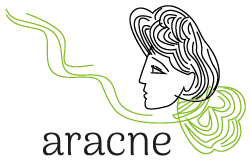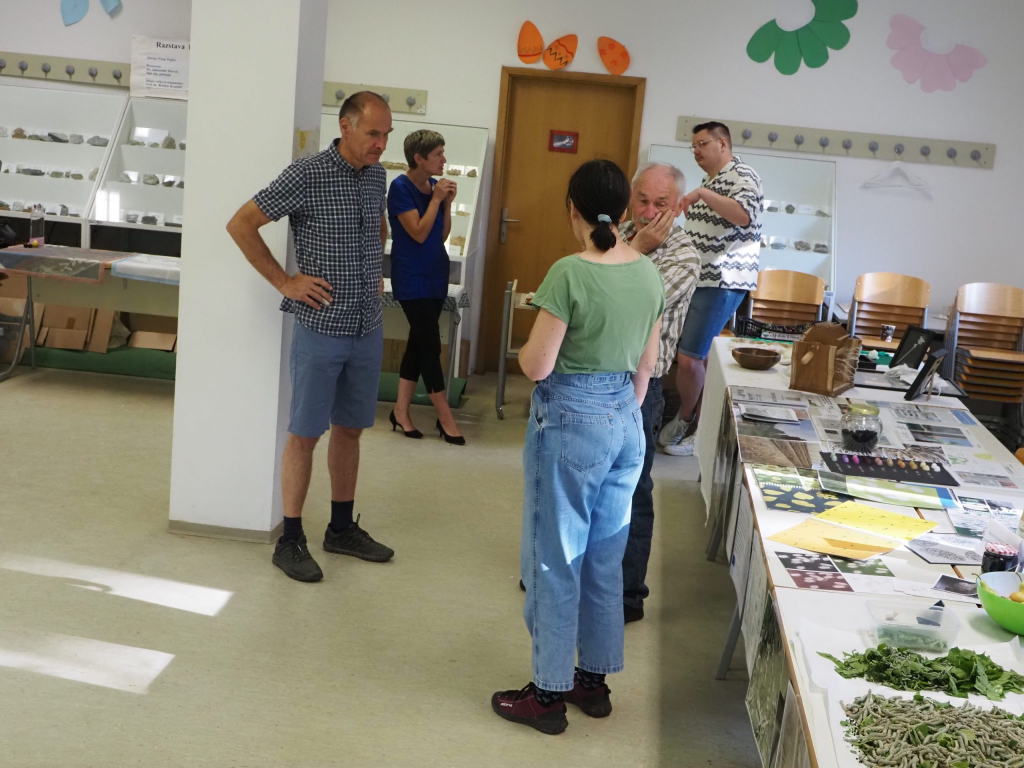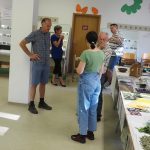Since 2008, the University of Maribor Botanical Garden has hosted the annual “Summer Museum Night” event. This is the largest promotional campaign for Slovenian museums, galleries, and other institutions in the fields of cultural heritage, culture, history, and art.
This year, the event took place on Saturday, June 15, 2024, from 6:00 p.m. this 9:00 p.m. We invite visitors to join a guided tour of the garden. Additionally, the Botany and Plant Physiology working group presented an exhibition showcasing activities related to the ARACNE project. Experienced Slovenian silkworm rearer Janez Škalič from the Goričko region demonstrated the life cycle of silkworms, from eggs to the 5th instar larvae and cocoon spinning.
Visitors admired the efforts of Slovenian silkworm rearers to produce and twist their own silk thread, as well as their own products, including knitwear, bobbin lace, embroidery, and advanced home design products made by Maja Botolin Vaupotič, Marko Balažič, and bobbin lace maker Majda Štampar from Velika Nedelja. The exhibition was held in the lecture hall of the University of Maribor Botanical Garden.
At the Moretum mulberry collection (Faculty of Agriculture and Life Sciences, University of Maribor, GPS: 46.508459, 15.622440), we organized guided tours demonstrating different mulberry varieties used for leaf and fruit harvest. The mulberry collection under the Vila Pohorje is divided into three sections. The first section features old sericultural mulberry varieties from the germplasm collection of the CREA Sericultural Institute in Padua, primarily grown for foliage production. These trees are characterized by large leaves, rapid growth, and high leaf biomass production. The second section contains vegetatively-propagated trees derived from local historical Slovenian and Hungarian trees, collected during sampling excursions of ARIS and ARACNE
project mulberry invitation activities. For centuries, the white mulberry has been a characteristic tree in Europe’s sericultural regions, with its leaves serving as food for silkworms. Despite the long-standing tradition, sericulture in Slovenia declined in the early 20th century with the advent of synthetic fibers. Nevertheless, many centuries-old mulberry trees have survived in Slovenia and neighboring countries, representing a valuable natural and cultural heritage of sericulture.The third section is dedicated to recent fruit-bearing varieties suitable for fruit processing. Visitors had the opportunity to taste various mulberry fruit varieties. Cultivation techniques and leaf harvesting for feeding purposes were also demonstrated. We were pleased to unveil the traditions and cultural heritage of sericulture to approximately 70 visitors.








